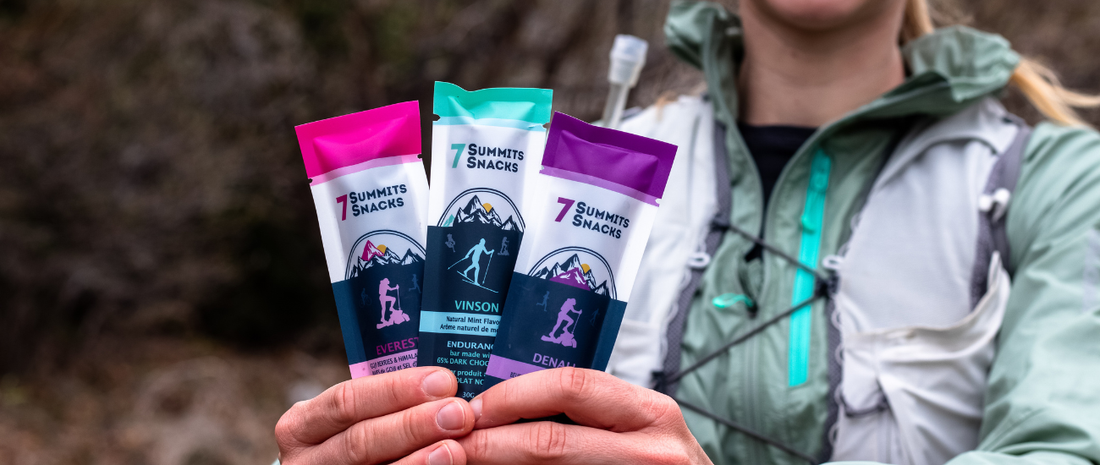
A Brief History of Sports Nutrition
Share
There’s something special about understanding the fuel that powers your body—not just for a single event, but for a lifetime of movement.
For decades, athletes, scientists, and entrepreneurs have continuously pushed the boundaries of what the body can achieve through improved equipment and training techniques, but also with the help of what we put into our bodies.
In this post, we explore the fascinating evolution of sports nutrition through the lens of key products: from early energy drinks like Lucozade and Gatorade, to the development of energy gels and bars, and the role of chocolate in fuelling elite performance. Whether you're a weekend warrior or an elite competitor, understanding where these products came from can help you better navigate the options available today—and fuel smarter.

The Dawn of Liquid Fuel: Energy Drinks
The story begins not on the track, but in the sickroom. In 1927, a chemist named William Owen created 'Glucozade' (later Lucozade) as a source of quick energy for the ill. It was, at its heart, citrus-flavoured sugar water. While successful as a medicinal product, it missed the massive potential of the athletic market.
That opportunity was seized in 1965 with the invention of Gatorade. Developed at the University of Florida to combat dehydration in their football team, it was a scientific breakthrough. The original formula mixed water, sodium, sugar, potassium, phosphate, and lemon juice to replenish carbs and electrolytes lost through sweat. This created the entire sports drink category.
These early drinks are isotonic—their molecular concentration is similar to human blood, allowing for relatively efficient absorption. They work well for shorter, less intense activities. However, their limitation becomes clear during prolonged, high-intensity exercise. When sweat rates are high and carbohydrate demands soar, the high sugar concentration can overwhelm the gut, leading to the dreaded "gut rot"—a feeling of bloating, nausea, and distress that has derailed countless endurance performances.
In response, hypotonic drinks emerged. With lower carbohydrate levels and higher electrolyte content, they solve the gut distress issue but create a new one: they are insufficient for fuelling, forcing athletes to find carbohydrates elsewhere.

Concentrated Energy: The Rise of the Gel
The need for a concentrated, portable carbohydrate source led to the next innovation. In 1986, the first sports gel, Leppin Squeezy, hit the European market. Pioneered by sport scientist Tim Noakes, it offered a "convenient, pre-wrapped, portable" way to deliver maltodextrin and dextrose.
The gel became mainstream in the 1990s with brands like GU Energy and Hammer Nutrition. While flavours improved, the core formula remained largely unchanged: a highly processed blend of simple sugars and maltodextrin.
However, a growing body of evidence suggests a significant downside. Maltodextrin and high doses of processed fructose have been linked to poor gut health, insulin resistance, and inflammation. For many athletes, gels simply replaced one form of GI distress with another.

Solid Ground: The Evolution of the Energy Bar
Surprisingly, the energy bar predates the gel, with its origins not in athletics, but in the space race. The Space Food Stick, introduced by Pillsbury in the 1960s, was the first "balanced energy in rod form" designed for astronauts.
The first bar marketed directly to athletes was the PowerBar in 1986. Founded by an Olympic marathoner, it was a landmark product but notoriously unpalatable and difficult to chew. This opened the door for Clif Bar in the early 1990s, which prioritized taste and texture and quickly grew to dominate the market.
While bars offered a solid-food alternative, they introduced their own complexities. The market exploded with options—protein bars for recovery, date-based bars for "natural" energy, and highly processed bars filled with additives. The critical lesson for athletes is that not all bars are created equal. A protein bar, for instance, is ideal for recovery but a poor choice during exercise, as protein requires more blood flow for digestion, which can compete with the demands of working muscles.

The Original Functional Fuel: A Chocolate Renaissance
Long before labs formulated gels and drinks, athletes were using a powerful, natural fuel source: chocolate.
The historical record is rich with examples:
- In 1893, cyclist Maurice Garin consumed 19 litres of hot chocolate during a 24-hour race.
- Tour de France winners like Henri Cornet (1904) relied on vast quantities of chocolate for energy.
- Even today, elite cyclists like Tadej Pogačar incorporate chocolate into their fuelling strategies.
Chocolate was valued not just for its calories, but for its innate stimulant properties, primarily from cocoa's theobromine and caffeine. During World War II, it was formulated into high-energy ration bars for soldiers, proving its mettle for sustained performance and morale under extreme duress.
While many modern gels and bars use "chocolate flavour," they often contain little real cocoa and are built on the same processed sugar foundations.

The Next Chapter: Fuelling Smarter with 7 Summits Snacks
The history of sports nutrition reveals a clear pattern: each solution addressed a need but often introduced a new compromise—be it gut distress, inflammatory ingredients, or poor palatability.
At 7 Summits Snacks, we see this not as a dead end, but as an opportunity to return to fundamentals with modern science. We've learned from the past:
- From Drinks & Gels: We understand the critical need for rapid, easily digestible carbohydrates and electrolytes, but we avoid the gut-bomb effect of over-reliance on simple sugars and maltodextrin.
- From Bars: We believe in the psychological and physiological benefits of real, solid food, but we formulate for performance first, avoiding the fillers and high protein content that can hinder digestion during activity.
- From History: We honour chocolate's legacy as the original performance fuel, leveraging the natural benefits of cocoa alongside a precise blend of complex carbohydrates, healthy fats, and functional ingredients.
7 Summits Snacks was founded to be the culmination of this evolution. We offer the convenience and targeted nutrition of a modern sports fuel with the whole-food integrity and proven history of chocolate. It’s not just another bar; it's the next step in the history of sports nutrition.
Fuel Your Next Adventure
Ready to experience the next chapter in sports nutrition? Explore our range of performance-crafted chocolate bars, designed to support your adventures and your downtime with clean, functional ingredients.

